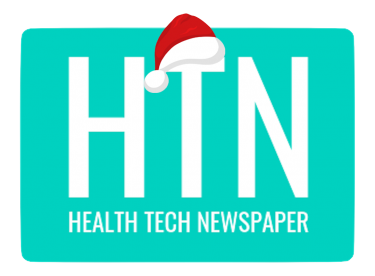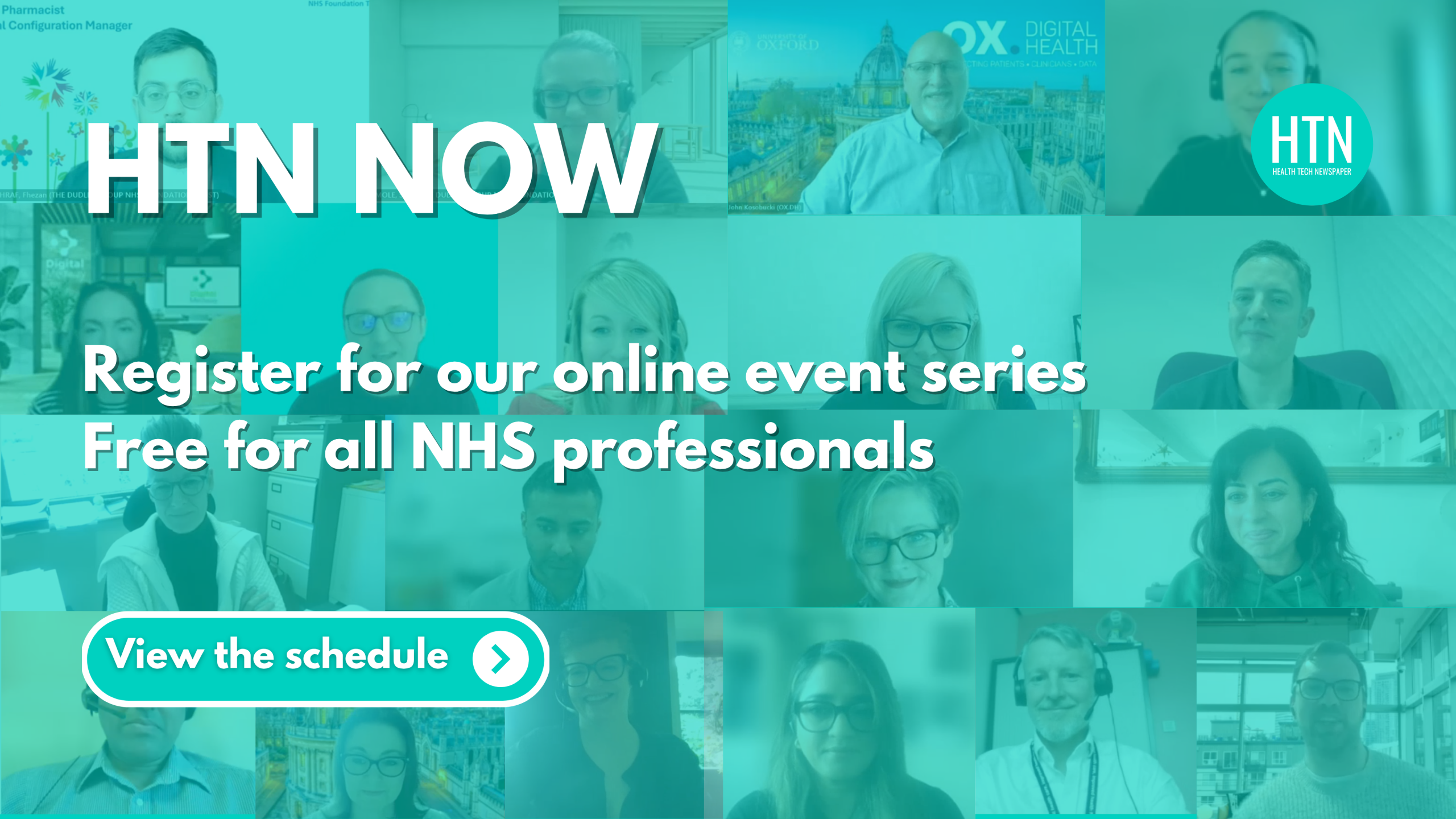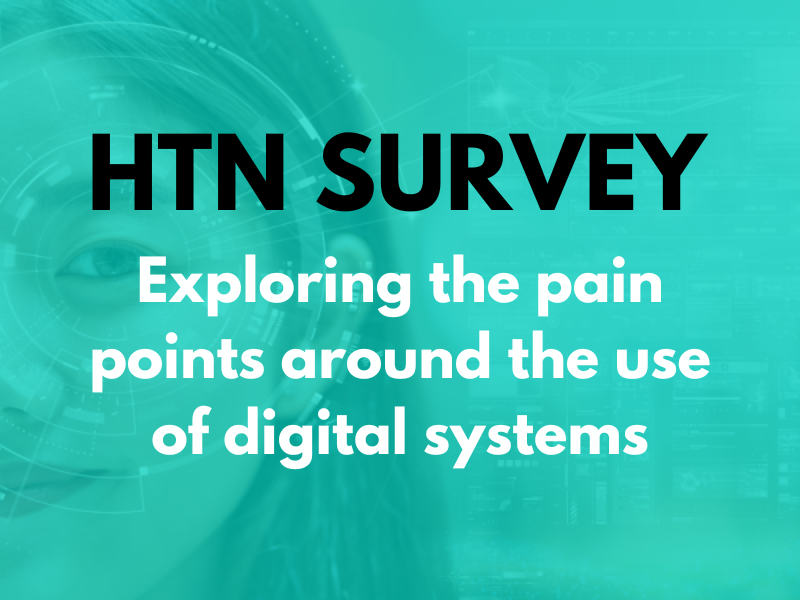For a recent HTN Now webinar, we were joined by a panel of experts to discuss the role of digital in supporting NHS reform – modernising services, shifting from hospital to community, and supporting the move from reactive to proactive care.
Panel members shared their insight and experience from a wide range of digital projects, highlighting what worked well and their learnings; how their organisations are currently tackling key challenges such as capacity and demand, and managing waiting lists; and balancing risk with innovation.
We welcomed Dawn Greaves, associate director of digital transformation at Leeds Community Healthcare; Ananya Datta, associate director of primary care digital delivery at South East London ICS; and Stuart Stocks, lead enterprise architect with Aire Logic.
Kicking off with some introductions, Dawn told us how her role as associate director of digital transformation “was only introduced last year to really focus on how we can strategically use digital to transform the way we’re delivering services”, and shared her team’s focus on helping patients leave hospital sooner and ensuring the right care is delivered in the right place. “We’ve just had our three-year digital strategy approved, so it’s a very exciting time,” she went on, “and as an organisation we’re quite digitally mature, but there are so many opportunities and there’s lots of work already progressing.”
Stuart talked about his experience as an enterprise architect, including within the financial sector, before moving into the healthcare space and working with Aire Logic on projects across health and social care, saying: “We’re quite an ethical company, so we’re very focused on good for health, good for the patient, and good for the public sector.”
And Ananya shared some details of her role at SEL ICS, as well as some of the key projects underway in the region around community pharmacy, interoperability, digital platforms, digitising adult social care, and more. “Lots of digital transformation is going on in SEL as part of the reform,” she said, “and we’re focused on that, as well as supporting our population, which is now almost 2.1 million.”
Sharing examples of the shift from hospital to community and reactive to proactive care
On examples of the role of digital in reform from his perspective with Aire Logic, Stuart told us how as technology specialists, Aire Logic are “very much involved” with a wide range of tech projects, including working to “deliver operations and systems needed” for the COVID and flu vaccination programmes. “The project was very focused around understanding how we can group people together, how we can get the cohorts working, and how we can make sure that there is a robust capability to deliver the right group of people for the right programme,” he said.
Stuart also pointed to improvements made to technical capabilities in cohorting across the NHS, as well as to the availability and processing of data, as a result of the project, adding: “One of the key challenges was actually ensuring the data was up-to-date and correct.”
Maintaining a focus on how services are delivered to the individual was also important, according to Stuart, “and there have been services developed through digital delivery mechanisms relating to finding and booking vaccinations, capturing vaccination data, and integrating with the NHS app”. Looking at outcomes from a project perspective, “the improvements have really been in data, and I think that’s essential in ensuring we have the capabilities to deliver services and make those work”, he said.
Ananya shared some of the work going on in SEL, including improving registrations with GPs and automating pathways. “We have 193 practices, and we worked with a partner to help them improve their automation in terms of the journey to register with a GP,” she said. “Now, almost 137 have automated the national pathways, and they’re getting extreme benefits not only in registrations, but also from the patient perspective, because it’s sped up the process significantly.” Ananya also talked about projects in adult social care, and the use of technology such as falls prevention, which is helping improve care and ensuring any urgent needs can be picked up by the relevant service.
LCH also has plenty of projects underway to tackle the shift to proactive care and from hospital to community, according to Dawn, who talked about work looking at early discharge and returning patients to their own homes sooner. “We have a team based in the hospital,” she said, “which is a joint team of community-based and social care staff who do joint triage against patients identified from the EPR as perhaps fitting the requirements for early discharge, and then put a care package in place.” This is currently being piloted in one of the trust’s neighbourhood teams, and has not only been successful in improving early discharge, but also in achieving “better recovery rates”, she added.
The trust is now looking at rolling that out further, Dawn told us, “but we will only do that once we’ve got a digital solution to support the work – it’s been a very manual process so far, because we’re still accessing three different IT systems. We’re putting together a joint shared care record which will enable the information to be captured once and then be made available to any of the teams interacting with the care, and we expect the first team using the digital solution to be going live in March.”
The LCH team also has “lots of different things” going on around tech-enabled care and remote monitoring, with Dawn sharing that work has begun on looking at “what our remote monitoring solution might look like for our patients”. Patients might still be accessing technologies from three different organisations, she continued, “and we’re looking at what a central model could look like, so it’s one hub which onboards patients onto the technology, that collects data, and which supports contact from patients”. It’s not just the tech that’s important, Dawn concluded, “but it’s how you use and interact with the tech that makes the biggest difference, I think”.
Focusing on learnings and best practice: What worked well, and what didn’t?
On what worked well for LCH, Dawn reflected on the importance of collaboration, and of recognising that: “Patients are not just our patients; they’re interacting with other organisations, like their GP practice, and there’s probably a lot that could be done to prevent them even getting to the hospital, so it works well when you’ve agreed a priority to work together, and also when there’s a dedicated team working on that.” A challenging aspect has been funding, she continued, “because there’s never enough funding to do what you want to do, and when there is funding it’s generally in the wrong place. Taking more of a city-wide approach would be beneficial.”
Collaboration and partnership across different organisations was also something Ananya highlighted as supporting projects to work well. “The second thing for me would be the people, process and technology,” she went on, “because any technology we roll out needs a change management process to be supported, and showing people what’s in it for them from the beginning instead of just rolling it out as a technology project, was a key learning for us.”
Ananya also echoed Dawn’s point about funding, and specifically recurring funding. “Most is to try something for one or two years,” she said, “but recurring funding based on the success would be key to ensure a continuation of those offerings for our population.”
“It’s really interesting hearing those two answers,” Stuart observed, “because in my experience, like with the vaccination programme, there wasn’t that issue about funding, and it’s great to hear that feedback about people, processes, and technology.” The COVID vaccination programme was an excellent example of the strength of collaboration, he said, where everyone was working in the same direction. “That was really powerful,” Stuart shared, “and making sure the scope and the services themselves were defined well was important, as was breaking the problem down into smaller parts, understanding the different perspectives, and being able to then help the decision-making process and deliver what was needed.” Having a target model that “everybody can buy into” is key, he stated, and that can help to bring the clinical and technical capabilities required for a project together.
On tackling the challenge of data and putting the architecture in place to support NHS modernisation going forward, Stuart spoke of the importance of data being complete, correct, current, and usable. “Our data in the NHS is very fragmented in certain circumstances,” he said, “and we spend a lot of time trying to get information directly into the GP record; being able to also get that out to direct care in other places and do things for population health can be difficult.”
When it comes to architecture, “that can help us understand how we can join things up better”, according to Stuart, “and taking a formal architecture approach to modelling the whole end-to-end environment can offer many efficiencies – it’s understanding where efficiency can be gained and where to spend the resource to make a difference in the component parts.”
What needs to be the focus for modernising services?
From an SEL ICS perspective, Ananya discussed some examples of ways services are being modernised, including the joining up of services. “When it comes to things like the project I mentioned earlier in falls prevention and community, and in adult social care – it’s about how we can join those services together to create a more holistic approach, an end-to-end service for residents,” she said.
More than 80 percent of care homes have now been moved to a digital social care record, Ananya told us, which is being improved to offer integration with the London Care Record. “Data availability is key,” she went on, “and data utilisation will be so important going forward, having different care settings having a view of the care record for the patient.” This is also being linked with GP Connect, so access will also be enabled to GP records for residents, and work is starting on improving proxy access to carers, so they can order repeat prescriptions. “Virtual wards are also playing a key role in service modernisation across the ICS, she said, “and 170 of our GP practices have rolled out cloud telephony, which is significantly improving call waiting times”.
To move things forward, consistency in products would be a key area of focus, according to Ananya, “along with patients taking care of their own health, like with the NHS app”. Whilst primary care has many features available to help patients manage their care, this needs to move into secondary care, she said, “giving patients more availability to manage things like appointments and other aspects of their care from the app”. There are many products in the market which might be valuable, she considered, “but it would be helpful in the future to see more comparison of available products and software, and the benefits offered”. She also noted the need for more alignment across local and national priorities.
“It all depends on perspective,” said Dawn, “because at the moment my priority is achieving everything in our digital strategy, but I know that when the 10-year plan is announced that will have a new set of priorities, and if I look at the city-wide work, that has its own level of priorities – it has to be a bit of a balance.” Getting the basics right is integral, she continued, “and we need to be focusing on getting everyone to a level playing field”, because whilst some organisations or parts of the system might be wanting to do more innovative things, “we need everyone to be at that same basic level”. Developing digital strategy by listening to what services need, and working with partners to figure out where the focus needs to be, is also key, she added.
“We need to be a good partner and work collaboratively, and there is a lot of that going on across West Yorkshire, particularly with the acute sector,” Dawn observed. She noted work on shared procurements, moving to a single instance, and shared working, which makes it easier for staff moving across different organisations. “There’s something about defining your local priorities, and following through on those as much as possible,” she finished.
From a supplier perspective, Stuart shared how collaboration is absolutely central to every level of care, and that interoperability should be the focus to driving this forward. “I’m not saying everyone has to be using the same technology,” he said, “but everything should be working in a really interoperable way, making sure that we’re not creating a marketplace where a couple of big providers are controlling the entire marketplace”. There’s a risk of that happening with EPR in the secondary care space, he considered, “and the key to solving that is ensuring that services can use different solutions as long as they work in an interoperable way”. Competition and more suppliers developing new technologies will ultimately lead to greater opportunities for digital transformation, he continued.
Looking ahead: New technologies and new opportunities for modernising care
Looking to the future, our panellists shared their thoughts on what technologies or areas of modernisation they are particularly excited about, with Ananya pointing to AI and automation, and solutions such as Microsoft Copilot which could be transformative for admin tasks. “We also need to significantly improve cybersecurity and infrastructure,” she said, “as these technologies will pose more of a risk. Clinical assurance will be another important area, with CSO’s playing a key role in ensuring they are safe to use and reviewing them for potential harms.”
In SEL, many things are happening in primary care around the introduction of these types of technology to tasks like dictation, she went on, “but we are working to develop the ethical framework and understand how they could be best used”. Balancing risk and innovation is a key area of focus, Ananya considered, “and we need to work with counterparts such as IG teams and cyber teams to make sure things are implemented correctly from the beginning”.
Dawn highlighted ambient voice technology as having a lot of potential, particularly from a community perspective, where she notes that staff are constantly moving between places. “If they can even get connectivity, staff are spending significant time typing up on their laptop, often from somewhere like their car,” she told us, “and so having that in place would make a massive difference”. The ability to use the NHS app in community and mental health would also be significant, she continued, “and that should be the single front door for patients – there are so many opportunities for developing that functionality, so when we are bringing in remote monitoring, patients have a way of inputting data securely”.
Sharing more about what organisations are doing is essential to help move forward, she added, “because I’ve heard of four different organisations this week who are looking at ambient voice technology individually – let’s start from something that’s already there if we can, or work on developing that together.”
“AI is definitely the most obvious choice,” agreed Stuart, “and we need to focus it on the interaction between the clinician and the patient; make it a tool for the clinician to use to help the patient, and do that clinician piece first. So we have that knowledge and medical expertise there, and once we start to get that right, I think AI will become more trusted.”
Wearable tech is another area he noted as being exciting. “Being able to do blood oxygen levels through a mobile phone camera”, he suggested, “and being able to link that back in to the NHS app, so you get e-observations going right back into your clinical record”. Stuart also talked about “POD tech” from Tim Berners-Lee, and how harnessing that correctly could help ensure a model where “the data itself is owned and managed by the patient, through technology managed by the NHS”. The data would then follow the patient, he added, “which would be amazing”.
We’d like to thank our panellists for their time, and for sharing these insights with us.





